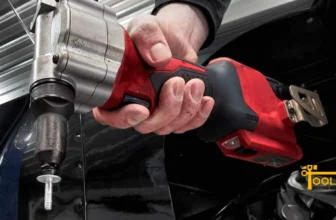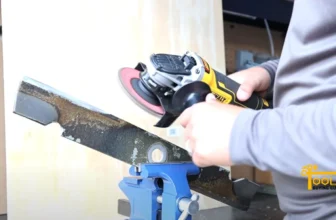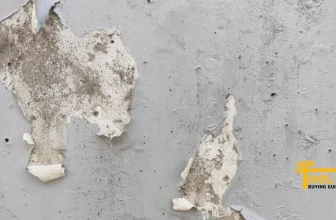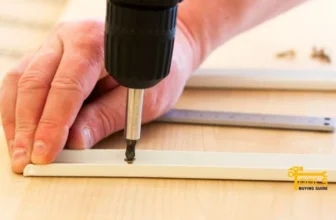
You ever have one of those days where you’re trying to unscrew a screw and it just won’t budge? Or maybe you’ve gone a step further, and the screw head is now stripped? The old saying goes, “When life gives you stripped screws, make a plan.” And that’s exactly what we’re going to do today. Let’s learn how to get the stripped screw out.
We will go through a step-by-step guide on how to remove a stripped screw. We’ll also cover some possible reasons why screws become stripped in the first place. So grab your kit of tools and let’s get to work.
Methods on How to Get a Stripped Screw Out
Here are the steps that you can take to get a stripped screw out:
Using pliers or locking grips to remove the screw
Pliers or locking grips are a great way to get a stripped screw out. First, make sure your pliers are clean and free of any dirt or debris, as this could cause more damage when you attempt to remove the screw.
Once you have your pliers ready, place them around the head of the stripped screw. Gently tighten the pliers until you feel a good grip on the screw. Then, apply a steady pulling force and carefully remove the stripped screw from its place.
Locking grips, meanwhile, are similar to pliers but provide a more secure fit on the screw head. This can make it easier and safer to remove a screw with a stripped head. To use locking grips, slide them onto the head of the stripped screw like you would with pliers and tighten them until they’re secure. Then, pull gently downward and slowly remove the stripped screw.
Using an extractor bit or screwdriver to remove the screw
An extractor bit is a specially designed stripped screw remover; it looks similar to a regular drill bit but is smaller and has a special head. Attach an extractor bit to the head of the stripped screw and use a power drill to turn it counterclockwise slowly. This will help loosen the stripped screw from its place and make it easier to remove.
Alternatively, you can also try using a regular screwdriver if you don’t have an extractor bit handy. Place the screwdriver in the head of the stripped screw and gently turn it counterclockwise. Make sure to apply only moderate pressure as you do this.
If the screwdriver cannot move the stripped screw, try using a different head or adding some lubricant, such as WD-40, to help loosen it.
Tips to improve Lawn Mowers Suction
Using a screw extractor for hard-to-reach screws
If the stripped screw is in a hard-to-reach area, you may have to use a screw extractor. A screw extractor is the best tool for stripped screw removal and looks similar to an ice pick. To use it, insert the point of the extractor into the head of the stripped screw and then twist it counterclockwise until it can grab onto the head.
Once the screw extractor has a grip, you can use a pair of pliers or a wrench to turn it counterclockwise and slowly remove the stripped screw. Be very careful when using the screw extractor, as it could potentially cause damage to its surroundings if not used properly.
Using a rubber band or piece of cloth
A rubber hand or piece of cloth can help get a better grip on the head of the stripped screw. First, place the rubber band or cloth around the head of the screw, and then use pliers or locking grips to gently grasp it. This should give you a better grip on the screw, allowing you to remove it more easily.
Using a soldering iron to melt the plastic around the head of the screw, 300 words:
If the stripped screw is surrounded by a lot of plastic or other material, you may have to use a soldering iron to remove it. First, heat the soldering iron, and then carefully direct it at the head of the stripped screw. This will help melt away any surrounding plastic and make it easier to remove the stripped screw.
Once the plastic has been melted, you can use pliers or locking grips to grip the head of the screw and then slowly twist it counterclockwise until it comes loose. Be very careful when using a soldering iron, as it can cause serious damage if not used properly.
Using Steel Wool or sandpaper to get a better grip
Another way to get a better grip on the head of the stripped screw is to use steel wool or sandpaper. Simply take some steel wool or sandpaper and rub it gently over the head of the screw. This will help create some friction and make it easier for pliers or locking grips to grab onto the head of the screw.
You can also put steel wool or sandpaper around the head of the screw and use pliers or locking grips to grip it. This should give you enough grip to slowly turn the screw counterclockwise and remove it from its place.
Use a drill bit or nail file to create a bigger hole
If the head of the screw is too small to grab onto, you can try using a drill bit or nail file to create a bigger hole. Take your drill bit and carefully insert it into the head of the stripped screw until you’ve created a larger hole. This should make it easier for pliers or locking grips to get a better grip on the head of the screw and remove it.
Alternatively, you can also use a nail file to widen the hole in the head of the stripped screw. Just make sure not to go too deep, as this could potentially damage the threading inside of it.
Hot and cold methods for removing stripped screw
The hot-and-cold method is another way to remove a stripped screw. First, apply a hot object, such as a hair dryer or lighter, to the head of the stripped screw. This will expand the metal and make it easier to grasp with pliers or locking grips.
Once you’ve heated the metal, immediately apply an ice cube to the same spot for a few seconds. This will cause the metal to contract and make it easier for pliers or locking grips to grip the screw head.
Finally, use pliers or locking grips to slowly turn the screw counterclockwise until it comes out of its place. Be as gentle as possible when doing this, so you don’t damage the screw.
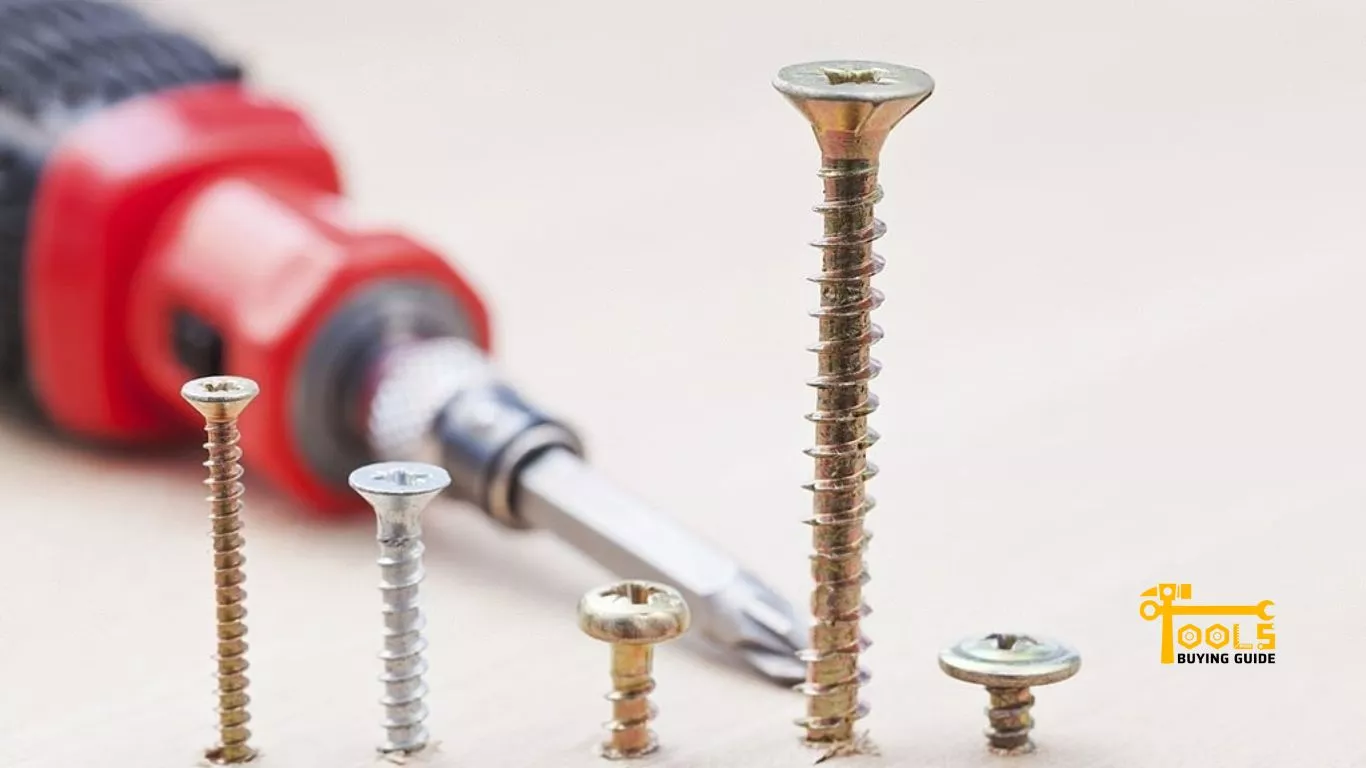
Why do screws become stripped?
Now that you know how to remove stripped screws, let’s look at why screws become stripped in the first place.
Poor craftsmanship
One of the main reasons why screws become stripped is due to poor craftsmanship. If a screw is not properly made, then it can easily become stripped when it’s being used. This usually occurs when the threading on the head of the screw isn’t deep enough or if the head has an unusual shape.
Over-tightening the screw or using wrong tools
Another common cause of stripped screws is over-tightening the screw or using the wrong tools. This can happen when too much torque is applied to the screw, which can strip the screw and prevent it from being removed. To avoid this, use the right tools for each job and don’t apply too much pressure.
Excessive wear and tear
Excessive wear and tear can also cause screws to become stripped over time. This usually happens when the screw is used in a rough environment or exposed to elements such as moisture, heat, and cold for extended periods of time. To prevent this, it’s important to be mindful of the environments your screws are exposed to and replace them when necessary.
Rust and corrosion
Corrosion can also cause screws to become stripped. This usually happens in environments with high humidity or when the screw is exposed to salt water. To avoid this, use stainless steel screws and always check for signs of rust before using them.
Unusual shapes of the screw head
Sometimes, the shape of a screw’s head can make it difficult to grip. This is usually caused by poor craftsmanship or an unusual design and can make it extremely difficult to remove stripped screw without damaging it. To avoid this, always inspect the head of the screw before using it and look for any signs of damage.
Tips for Avoiding Stripped Screws in the Future
To help avoid stripped screws in the future, here are some tips to keep in mind:
Clean and lubricate threads regularly.
Regularly clean the threads on the screws or nuts you’re using. This will help reduce friction and make them easier to remove when necessary. You should also use thread lubricant periodically to prevent rust and corrosion.
Use proper tools for the job
It’s also important to use the right tools for each job. Using a wrench or pliers that are too large can easily strip the threads of a screw and make it difficult to remove. Use the correct size and type of tool for each job, as this will help prevent screws from becoming stripped.
Don’t over-tighten screws or nuts
When tightening screws or nuts, ensure not to apply too much pressure. This can cause the threads to become stripped and make it difficult to remove them later on. To avoid this, only use as much torque as is necessary for the job.
Use a thread-locking adhesive when necessary
Sometimes, it’s helpful to use a thread-locking adhesive to keep screws and nuts in place. This will help prevent them from becoming loose or stripped over time. Just make sure not to use too much of the adhesive, as this can also make it difficult to remove the screw or nut later on.
Use a thread-tapping compound
If you’re having trouble getting the threads of a screw to catch, try using a thread-tapping compound. This will help create some friction and make it easier for pliers or locking grips to grab onto the head of the screw.
Read Also: Best Screw Compressor
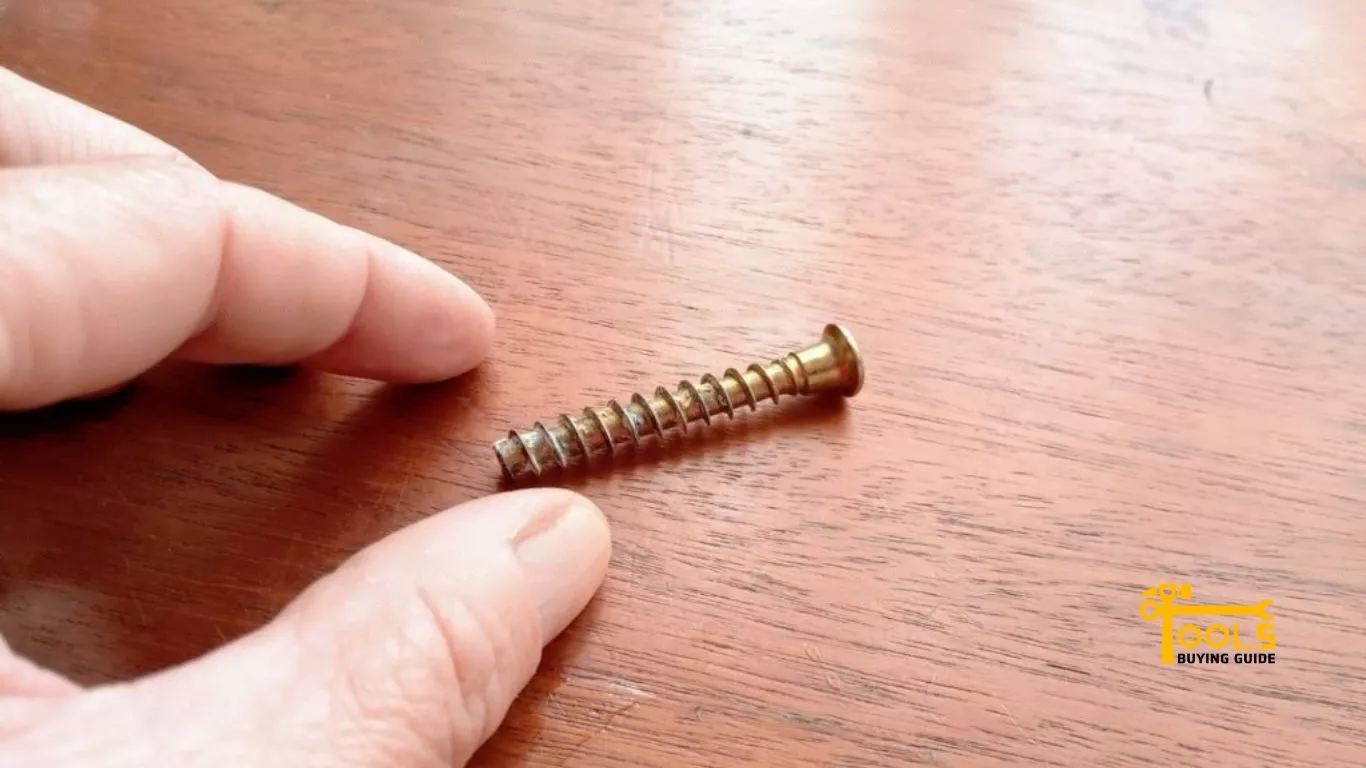
Frequently Asked Questions
The best way to remove a stripped screw head is with an extractor. A stripped screw extractor uses an aggressive bite on the head of the screw to grip it and turn it out. As for preventing one, ensure you’re using the right type and size of screws when installing any hardware.
Duct tape is a hack that can sometimes work, but it isn’t always the most effective. The best way to get a grip on a stripped screw is by using an extractor tool, as mentioned above. However, if you don’t have any other options, duct tape can help create friction between the screw head and your screwdriver.
A pair of needle-nosed pliers or tweezers can grab the edges of the screw and turn it in the right direction, or you can try using a rubber band to grip the screw. Another option is to use a small flathead screwdriver and press down on one end of the stripped screw while turning it.
Try using a bit of WD-40 on the head of the screw, and wait a few minutes before attempting to unscrew it again. You can also use an impact driver to loosen the screw, providing enough torque to get it to turn. If all else fails, try using an extractor tool, as previously mentioned.
The same methods apply to metal screws as with any other material. You can use an extractor tool, needle nose pliers, a rubber band, or WD-40 to loosen the screw and get it out. Use an impact driver for added torque if you’re in a pinch.
Conclusion
If you’ve encountered a stripped screw, there are several solutions to help you get it out. Trying the methods discussed above on how to get a stripped screw out could save you time and energy.
From drilling it out to using rubber bands as a makeshift grip, you have plenty of options when tackling this annoying problem. Just remember – prevention is better than cure! A little caution when working with screws will go a long way toward avoiding any unnecessary frustration.


